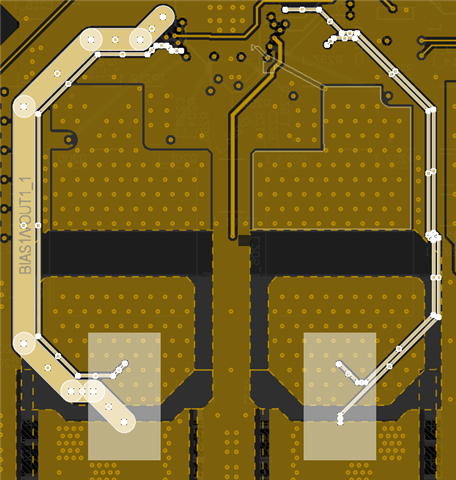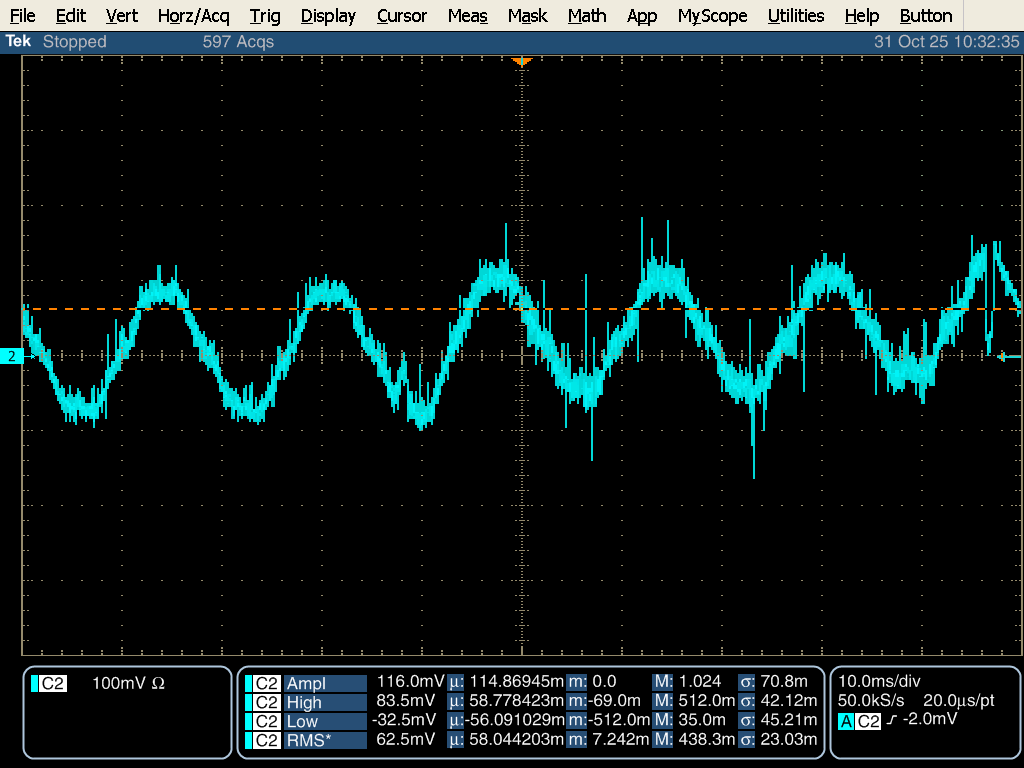Other Parts Discussed in Thread: LM5137
I am using the LM5137F-Q1 with:
- 24-42V input
- 12V output (set via feedback resistors)
- DRSS 10%
- FPWM enabled
- 0.5ohm load resistor (~24A total load current)
I'm seeing ~20% higher current being sourced from the secondary channel, where I would expect equal loading to primary and secondary.
What could be possible causes to look for? Is this purely layout related?





